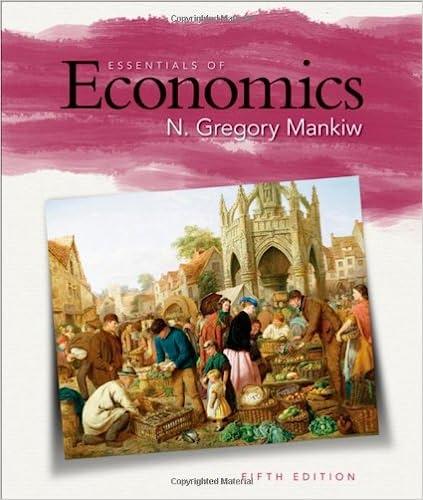Question
16. A price-taking firm and a monopoly firm are alike in that: a. price equals marginal revenue for both. b. both maximize profits by choosing
16. A price-taking firm and a monopoly firm are alike in that:
a. price equals marginal revenue for both.
b. both maximize profits by choosing an output where marginal revenue equals marginal cost.
c. price exceeds marginal cost at the profit-maximizing level of output for both.
d. in the long run, both earn zero economic profits.
17. In equilibrium under monopolistic competition:
a. marginal revenue is equal to marginal cost.
b. marginal revenue exceeds marginal cost.
c. marginal revenue is less than marginal cost.
d. marginal revenue exceeds average revenue.
18. Which of the following is not true of long run equilibrium under monopolistic competition?
a. Economic profits for all firms are zero.
b. There is no incentive for firms to enter or exit this market.
c. Equilibrium quantity is where MR=MC.
d. None of the above.
19. The maximum possible profit that could be earned by a cartel is:
a. less than the monopoly profit.
b. equal to the monopoly profit.
c. greater than the monopoly profit.
d. unrelated to the level of monopoly profit.
20. Firms in an oligopoly market can potentially earn economic profits.
a. In the short run, but not the long run.
b. In the long run, but not the short run.
c. In both the short run and long run
d. In neither the short run nor the long run
21. Barriers to entry can be the result of
a. Positive network externalities
b. High switching costs
c. Economies of scale
d. All of the above
22. If an industry currently dominated by three large producers whose revenues represent 30%, 30%, and 30% of the market's total revenues, with the remaining two firms each representing 5%, then the two largest firms merged, what would be the new four firm concentration ratio and the new Herfindahl-Hirschman Index for this industry?
a. 100%; 2.750
b. 95%; 2,750
c. 100%; 4550
d. 95%; 4525
23. The key characteristic of oligopoly markets is "interdependence among firms." This means that:
a. each firm must consider how its decisions will affect its competitors.
b. the demand curve faced by each firm is perfectly elastic.
c. each firm produces a product identical to its rivals.
d. firms will be able to earn above-normal profits in the long run.
24. At a higher wage rate:
a. the opportunity cost of working increases.
b. the opportunity cost of working decreases.
c. the opportunity cost of leisure decreases.
d. the opportunity cost of leisure increases.
25. An increase in the interest rate will:
a. increase the amount of money borrowed by firms.
b. have an ambiguous effect on the amount of money borrowed by firms.
c. have no effect on the amount of money borrowed by firms.
d. decrease the amount of money borrowed by firms.
26. When wages increase:
a. the opportunity cost of leisure time increases.
b. the quantity of labor supplied by an individual always increases.
c. the quantity of labor supplied by an individual always decreases.
d. the opportunity cost of leisure time decreases.
27. Which of the following is not a reason it is harder to unionize in the fast growing service industry?
a. Employees in the service sector often work more closely with management.
b. Service sector jobs are often in small firms, making it difficult to organize large numbers of employees across the industry.
c. Service industry jobs are often standardized, reducing the need for unions to negotiate working conditions.
d. Service industry jobs are more varied, making it harder to negotiate as a group.
28. Since the 1980s the proportion of income received by the top 5 percent of Americans has ____, and the measured income of Americans in the lowest fifth has ____.
a. risen; risen
b. fallen; risen
c. risen; fallen
d. fallen; fallen
29. The amount of poverty in the United States ____ in the 1960s and ____ in the 1970s.
a. held relatively steady; increased
b. decreased; held relatively steady
c. increased; decreased
d. decreased; increased
30. The typical 50-year-old male earns approximately ____ as a male in his early 20s.
a. 1/3 as much
b. half as much
c. the same
d. twice as much
Step by Step Solution
There are 3 Steps involved in it
Step: 1

Get Instant Access to Expert-Tailored Solutions
See step-by-step solutions with expert insights and AI powered tools for academic success
Step: 2

Step: 3

Ace Your Homework with AI
Get the answers you need in no time with our AI-driven, step-by-step assistance
Get Started


